Let’s Talk About Texture: Understanding Slub and Nep
When we talk about denim, and especially when we talk about premium denim, one of the words that frequently comes up is texture.
When we talk about denim, and especially when we talk about premium denim, one of the words that frequently comes up is texture. This term is often confused with hand-feel, which describes how the garment feels when we run our hands over its face (which says something about how it will feel next to our skin). Generally, though, what we mean when we talk about texture and denim is a kind of visual texture. It’s something we see, not something we feel. It’s a product of the interplay of colour, of light and dark, similar to the kind of texture we might describe when looking at an oil painting. For most denims, texture is a rather subtle affair. Since denim is usually comprised of a mixture of indigo-dyed warp fibres and undyed weft warns, the blue and white blend harmoniously to create what looks, from a distance, like a consistent shade of either light or dark blue. When we get closer, we can see both colours, but this microscopic texture disappears when we zoom out.
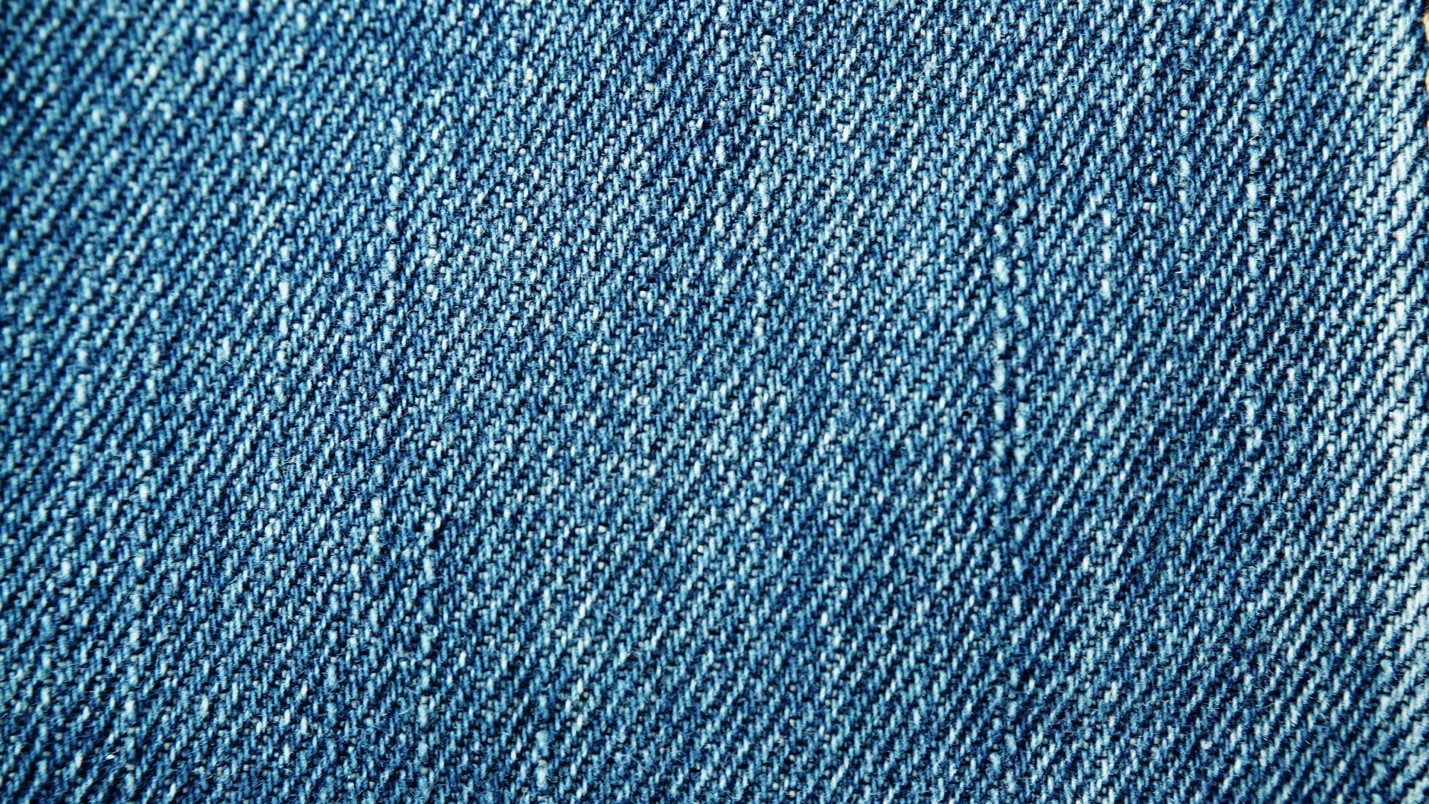
Premium denim consumers expect something a little more visually interesting. They want texture that can be both seen and felt, and this often means that, during the manufacturing processes, brands can play with two texture-producing irregularities: slub and nep. Today, we’ll take a closer look at each of these, helping you develop a keen eye for slubby and neppy denim and understand how these effects are produced. Let’s start with slub.
Slub: It’s Raining Again
The looms that legacy denim mills used to mill their legendary denims were imperfect machines. They couldn’t quite produce a perfectly consistent denim. Several factors contributed to this. First, the yarns were slightly uneven. The microscopic bulges in yarn are called slubs, which gives slubby denim its name. Second, and most famously, the wood floors of some plant were quite springy. The bouncing floorboards meant that the looms couldn’t operate entirely smoothly. This resulted in something called loom chatter, which, when combined with the uneven yarns, created a characteristic unevenness on the surface of the denim. This unevenness can be seen in the image below of a pair of deadstock Levi’s from 1937. The undyed yarns break through the surface of the denim, and you can see that some of them are significantly larger than others. Each square inch of the denim is slightly different from the square inch that sits next to it.
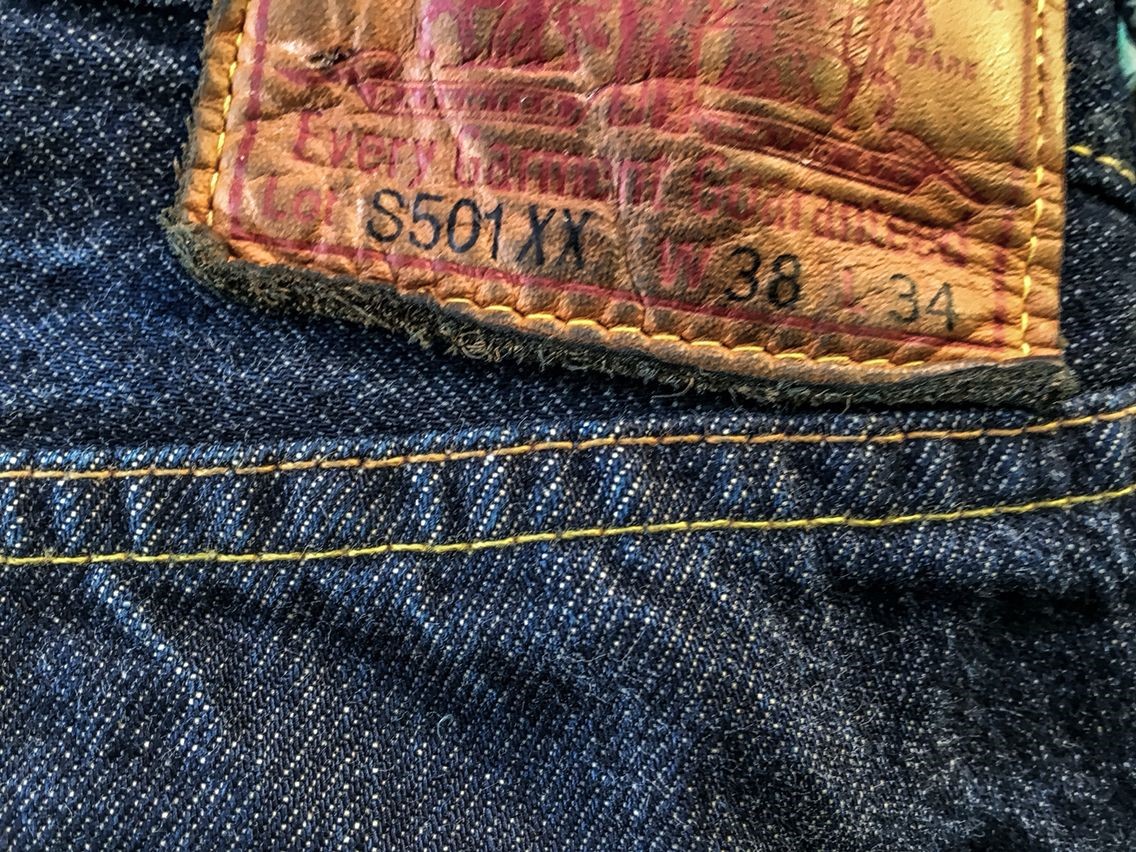
The technicians at the mills and the executives at the legacy brands saw these irregularities as bugs that needed to be worked out of their systems. They began solving the ‘problem’ of slubs by introducing open-end spinning in the 1970s. The smoother yarns that this process could produce meant that denim production could be faster, and the resulting fabric could be more consistent. This might have meant the end of slubby denim if it hadn’t been for a handful of denim purists who appreciated the more textured fabric. Denim manufacturers in Japan kept the old ‘imperfect’ looms running. Going even further, the engineers at Japanese denim house Big John found a way to engineer slubs into their yarns, making them the first to recognize the commercial potential for denim designed to be slubby. Fast forward a few decades and there are now scores of brands that advertise their slubs as a feature, not a bug. Brands compete to produce the slubbiest denims for slub-loving enthusiasts, with texture that can be appreciated from across the room or, in some instances, from across the street. These super-slubby denims have a characteristic vertical texture that, when faded, produces what the Japanese call tate ochi (vertical drops), the rainfall-like fade patterns adored by slub-lovers.
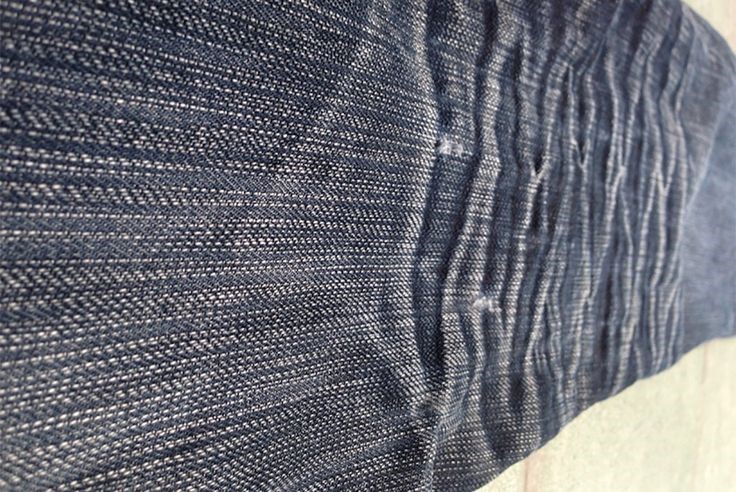
Nep: Let it Snow, Let it Snow, Let it Snow
While most premium denims feature some degree of slub, nep is a different story. Neppy denim is often slubby as well, so drawing a sharp line between slubby and neppy denim is difficult, but there’s one trademark feature of neppy denim that is impossible to miss. The face of the denim, when examined up close, looks as though it has been dusted with snow. The frosty effect is much prized by denimheads, but what produces it?
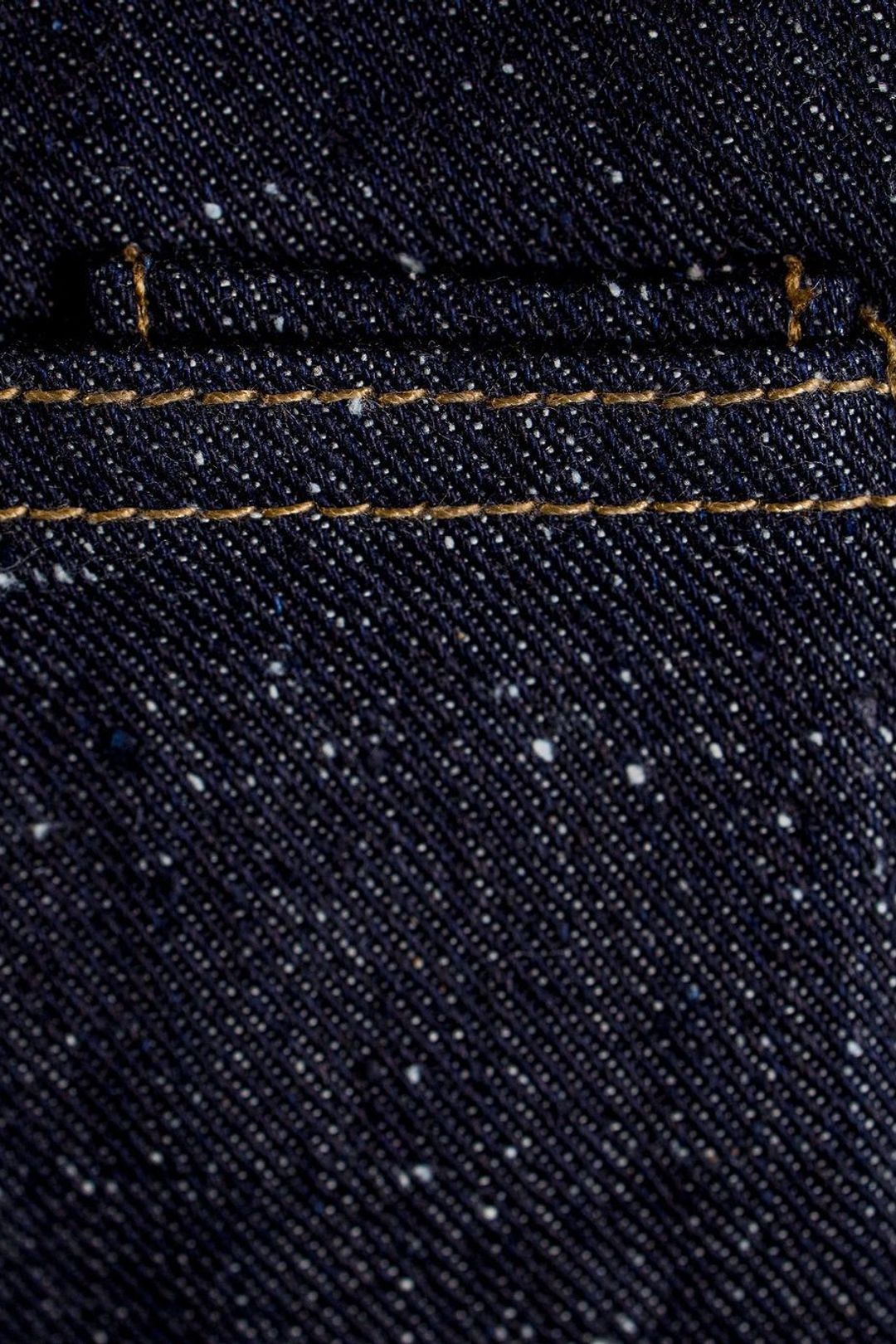
Like slubs, neps were originally a bug in the system that denim manufacturers did their best to eliminate. Uneven yarns didn’t just swell in places. They occasionally knotted and clumped together, and these would result in tufts of cotton that poked through the surface. While denim manufacturers did everything to produce denim that was entirely free of neps, a small subset of denim consumers (and especially those in Japan) loved these miniature imperfections. When premium denim brands started looking for ways to introduce texture into their fabrics, they began looking at ways to engineer neps. If engineered slub is produced by a combination of uneven threads and loom chatter, neps are the result of this process dialed up to 11. They slow down the spinning process and make the yarn as loose as possible, which creates a yarn full of knots and tufts that looks very much like a string of unevenly sized pearls. The undyed yarns are then combined with indigo dyed slub yarns, and the result is tufts of yarn poking through the face of the denim. As with slub, nep can be dialed up or down depending on how far the manufacturer decides to push the process. In the image above, the manufacturer has used a moderately neppy weft yarn, and the resulting denim looks like it’s come in from the cold with a mild flurry blowing outside. In the image below, which features a combination of both slubby and neppy yarns, the process has been dialed up to 11. It looks as though the pair has been through a blizzard.
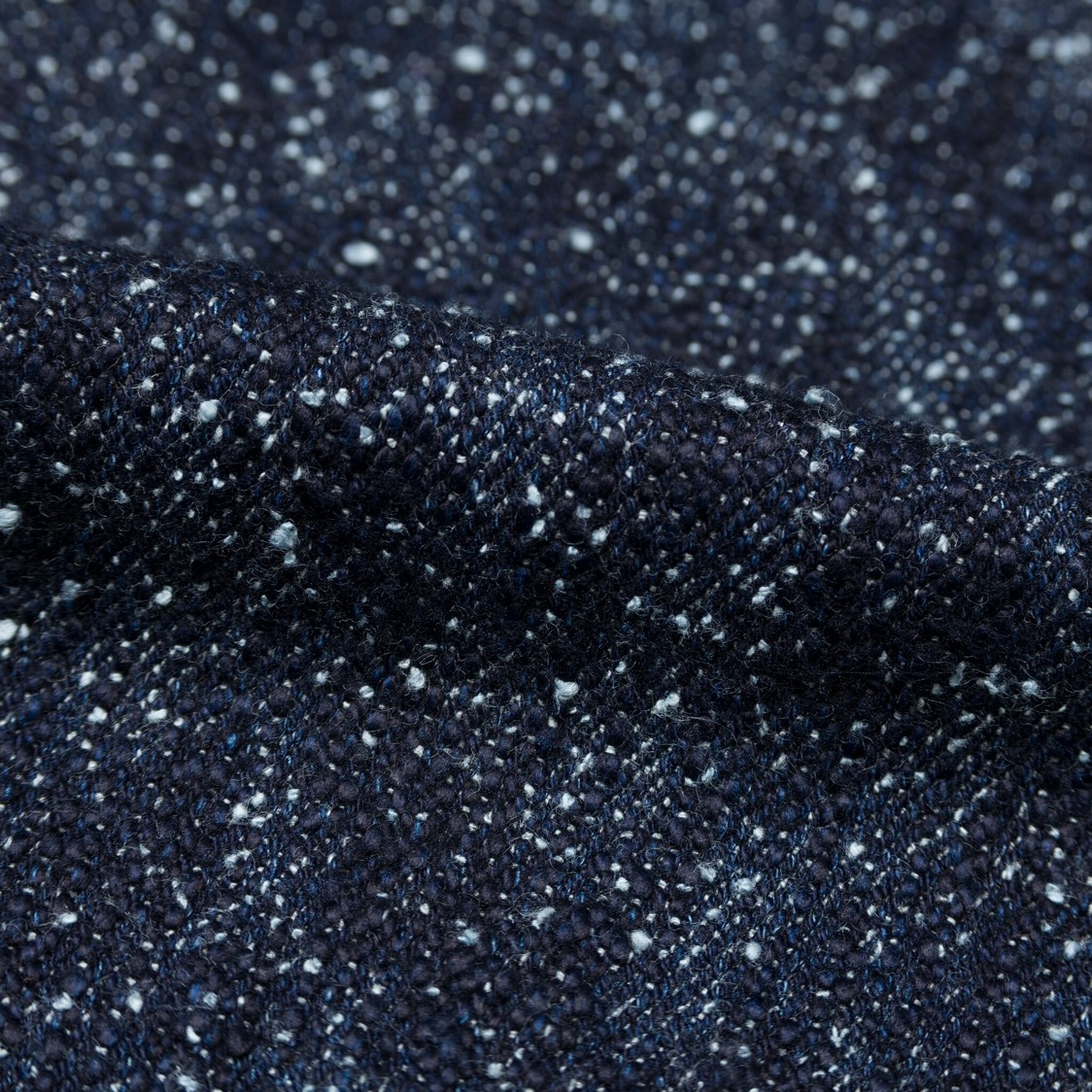
Super-slubby and super-neppy denim isn’t for everybody. While you might appreciate textured denims, you might prefer something on the subtler end of the scale. Let your eye and hand be your guide. If you can’t get enough texture, you can narrow things down by using the appropriate terms in your search. If it’s that rainfall effect you’re looking for, try putting slubby denim into your searches to help narrow down the results. If it’s that snowy look, you can do the same with neppy denim. Happy hunting.
Biraz da Dokudan Bahsedelim: Şantuk ve Neps Nedir?
Denim denilince, özellikle premium denim denilince akla ilk gelen kelimelerden birisi dokudur. Bu terim, genellikle tenimize nasıl uyum sağlayacağını görmek için bir kumaşa dokunduğumuzda elimizle algıladığımız his ile karıştırılır. Ancak söz konusu doku ve denim olduğunda bahsedilen şey bir tür görsel dokudur. Hissettiğimiz bir şey olmaktan ziyade gördüğümüz bir şeydir. Doku, bir yağlı boya tablosuna bakarken de görebileceğimiz, açık ve koyu renklerin etkileşiminin bir ürünüdür. Çoğu denimde doku, nispeten zor fark edilir. Denim genellikle indigo boyalı çözgü lifleri ve boyanmamış atkı ipliklerinden üretilir; mavi ve beyaz harmanlanarak uzaktan mavinin açık veya koyu tonu olarak gördüğümüz bir görüntü elde edilir. Yakından baktığımızda bu iki rengi de görürüz ancak uzaktan baktığımızda mavi ve beyazın oluşturduğu bu doku kaybolur.
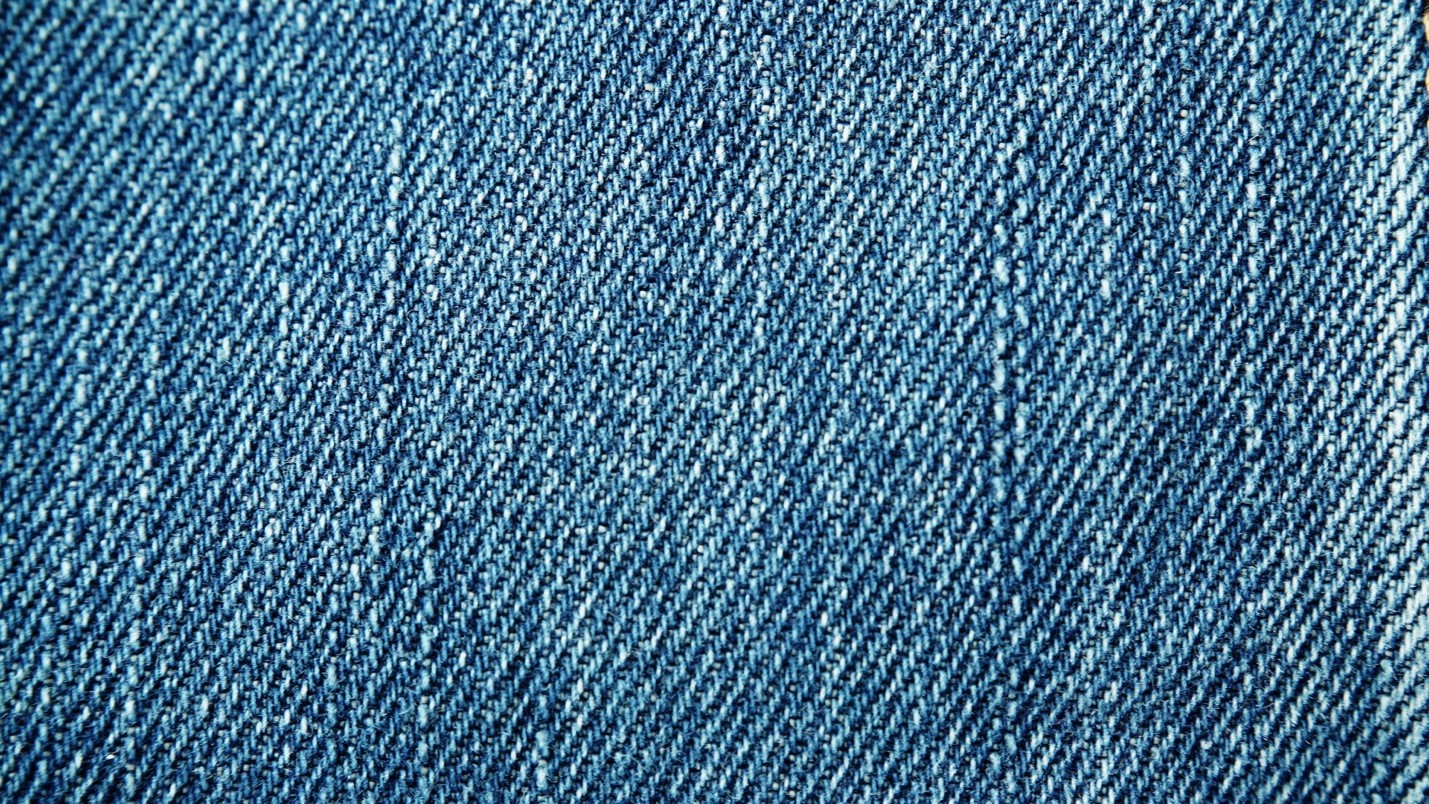
Premium denim tüketicilerinin beklentisi ise bu ürünlerin görsel olarak biraz daha ilgi çekici olması. Bu ürünlerin hem gözle görülen hem de elle hissedilen bir dokuya sahip olmasını istiyorlar. Bu da markaları, üretim sürecinde iki farklı doku türünden yararlanmaya itiyor: Şantuk ve Neps. Bu yazımızda bu iki doku türünü detaylı bir şekilde inceleyerek bu dokuların nasıl elde edildiğini anlamanıza yardımcı olacağız. Şantuk ile başlayalım
Şantuk: Yağmur Yağıyor
Eski denim fabrikalarının dillere destan denimlerini frezelemek için kullandıkları tezgahlar pek kusursuz değildi. Bir türlü denim üretimlerini tutarlı bir şekilde gerçekleştiremediler. Bu durumun böyle olmasına sebep olan birkaç faktör vardı. Öncelikle iplikler biraz düzensizdi. İplikteki mikroskobik çıkıntılara şantuk denir ve şantuklu denim de ismini bundan alır. İkinci olarak ve en önemlisi, bazı fabrikalardaki ahşap zeminler oldukça esnekti. Sürekli sıçrayan döşeme tahtaları, dokuma tezgahlarının sorunsuz bir şekilde çalışmasını engelliyordu. Bu durum ile ipliklerin düzensizliği bir araya geldiğinde, denimin yüzeyinde karakteristik bir eşitsizlik meydana getiren dokuma tezgahı izini ortaya çıkardı. Bahsettiğimiz eşitsizlik, aşağıdaki görselde yer alan 1937'den kalma Levi's pantolonda görülebilir. Denimin yüzeyinde kendisini gösteren boyanmamış ipliklerin bazılarının nasıl diğerlerinden çok daha büyük olduğunu görmek mümkün. Denimin her santimetre karesi bu bakımdan birbirinden farklı.
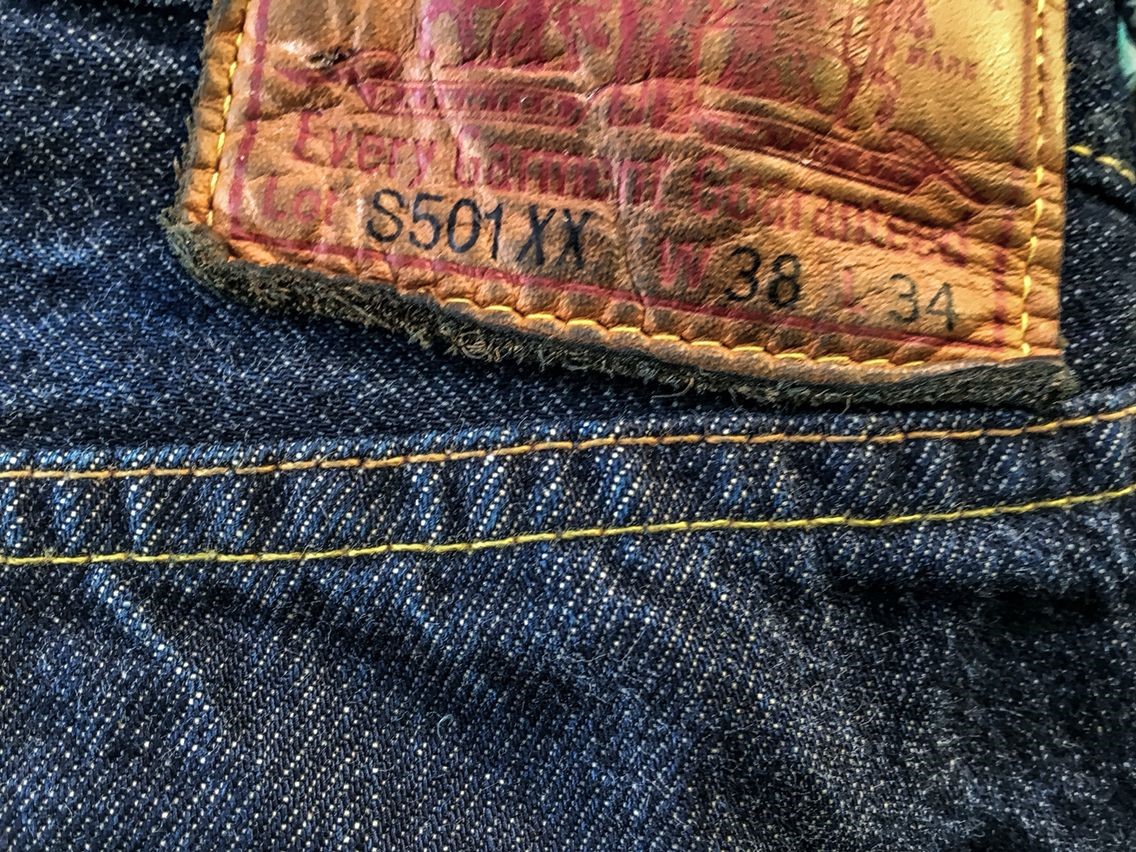
Atölyelerdeki teknisyenler ve eski markaların yöneticileri, bu eşitsizlikleri düzeltilmesi gereken bir hata olarak gördüler. Şantuk "sorununu", 1970'lerde açık uçlu iplik eğirme tekniğini kullanmaya başlayarak çözdüler. Bu tekniği kullanarak arzu edilen pürüzsüz ipliklerin elde edilmesi ile denim üretiminin hızlanabileceği ve ortaya çıkan kumaşın da daha tutarlı olabileceği düşüncesi hakimdi. Bu da eğer daha dokulu denimleri tercih eden denimseverler olmasaydı şantuklu denim devrinin kapanması anlamına gelebilirdi. Japonya'daki denim üreticileri eski "kusurlu" dokuma tezgahlarını kullanmaya devam etti. Bu durumu bir adım daha da ileri taşıyan Japon denim üreticisi Big John'daki mühendisler, şantukları iplik haline getirmenin bir yolunu geliştirdi. Bu da Big John'u şantuklu denimlerin ticari potansiyelini fark eden ilk marka haline getirdi. Günümüzde ise artık şantuk kullanımını bir hata olarak değil, bir özellik olarak sunan çok sayıda marka görüyoruz. Öyle ki markalar artık şantukseverler için bir odanın hatta bir sokağın diğer ucundan bile kendisini belli eden dokulara sahip denimler üretmek için birbirleriyle yarışır hale geldiler. Bu süper şantuklu denimlerde, zamanla Japonların tate ochi (dikey damlalar) dediği ve şantukseverlerin bayıldığı karakteristik, dikey bir doku ortaya çıkıyor.
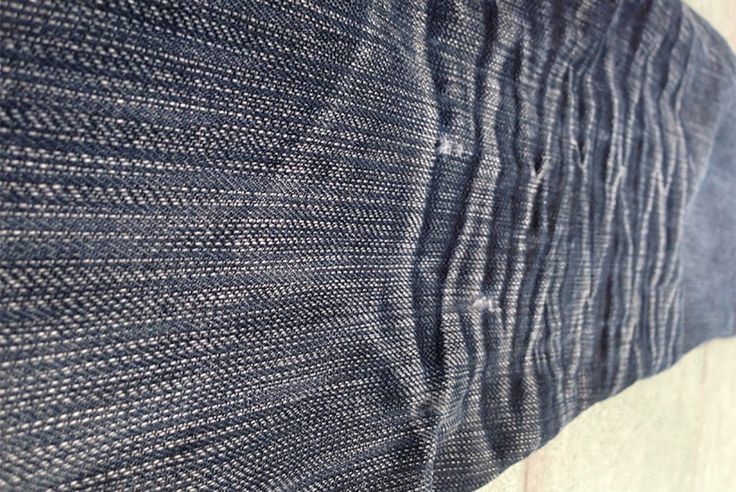
Neps: Bu Sefer Kar Yağıyor
Her ne kadar çoğu premium denim belli bir oranda şantuklu olsa da neps bambaşka bir hikaye. Nepsli denimler genellikle aynı zamanda şantukludur, bu nedenle şantuklu ve nepsli arasında keskin bir çizgi çizmek zordur ama nepsli denimin kendine özgü, gözden kaçırılması imkansız bir özelliği vardır. Yakından bakıldığında, denimin yüzeyi karla kaplanmış gibi görünür. Peki, denimseverler tarafından çok sevilen bu görüntü nasıl elde edilir?
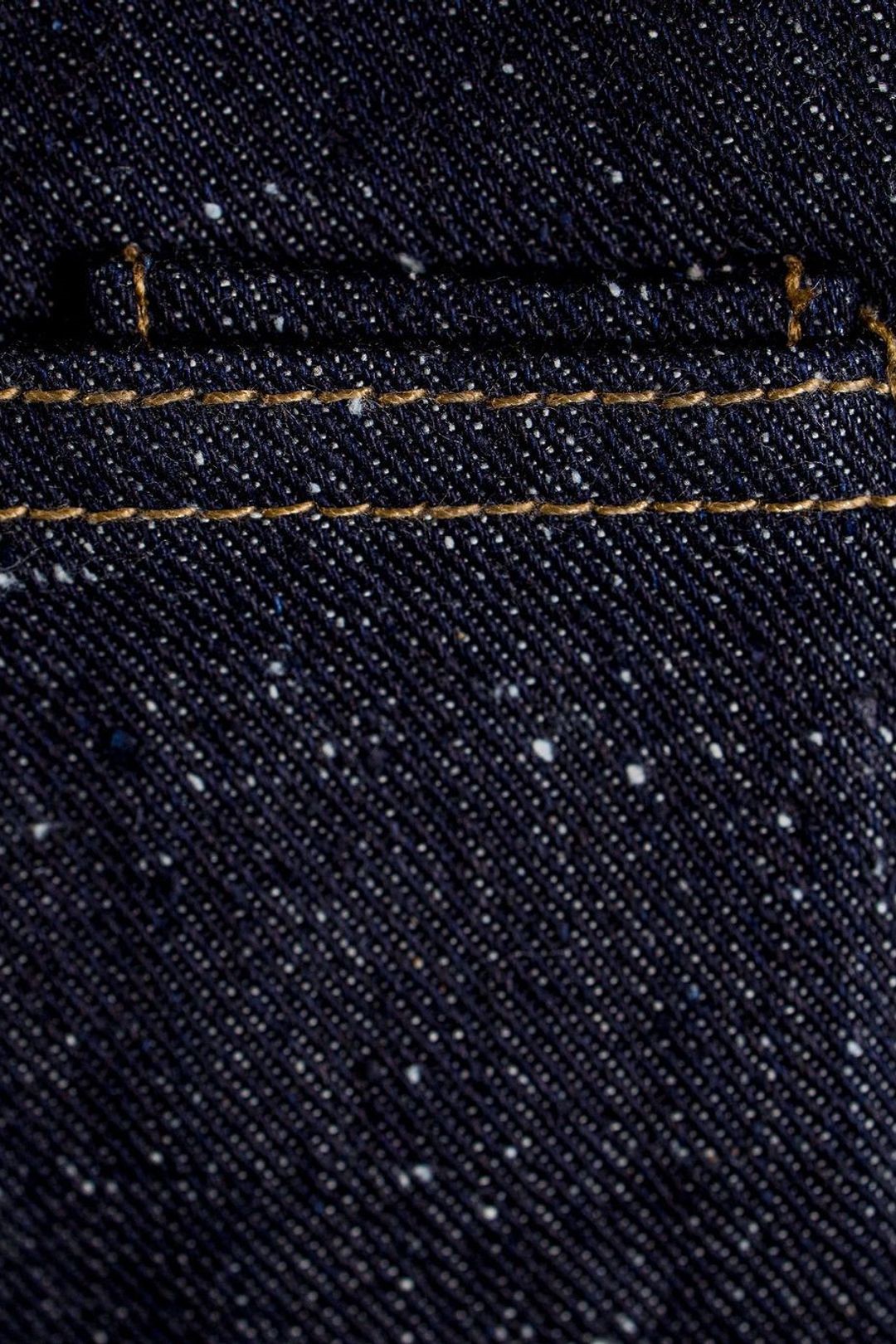
Şantukta olduğu gibi neps de başta denim üreticilerinin gidermek için ellerinden geleni yaptıkları bir hataydı. Düzensiz iplikler olması gerektiği gibi durmuyor, bazen düğümleniyor ve kümeleniyorlardı. Bu da denim yüzeyinde pamuk öbekleri olmasına sebep oluyordu. Her ne kadar denim üreticileri bu öbeklerin olmadığı ürünler elde etmek için ellerinden geleni yapsalar da bu minik kusurlar, küçük bir grup denim tüketicisinin (özellikle Japonya'dakilerin) oldukça hoşuna gitti. Kumaşlarına doku katmanın yollarını arayan premium denim markaları, nepsleri kumaşa entegre etmenin yollarını aramaya odaklandı. Denimlere şantuk dokusunun kazandırılmasında kullanılan, düzensiz iplikler ve dokuma tezgahı izinden yararlanılan, gözle görünürlük seviyesi on bire çıkarılan bu süreçten, neps dokusu kazandırmak için de yararlanılıyor. Bu süreçte eğirme süreci yavaşlatılır ve iplik mümkün olduğunca gevşek hale getirilir, böylece eşit olmayan büyüklüklerde ve inciye benzeyen düğümler ve öbeklerle dolu bir iplik elde edilir. Boyanmamış iplikler, daha sonra indigo boyalı şantuklu ipliklerle birleştirilir ve bu işlemin sonunda denimin yüzeyinde gözle görülür bir şekilde yer alan iplik öbekleri meydana gelir. Şantukta olduğu gibi nepsin gözle görünürlüğü de üreticinin isteğine göre artırılabilir veya azaltılabilir. Yukarıdaki görselde, üreticinin orta derece nepsli atkı iplikleri kullandığı ve sanki denim hafif bir kar yağışına maruz kalmış gibi bir görüntü elde edildiği görülüyor. Aşağıdaki görselde yer alan hem şantuk hem de neps dokusundan yararlanıldığı denimde ise gözle görünürlük seviyesi on bire çıkarılmıştır. Bunun da pantolona tipiye maruz kalmış gibi bir görünüm kazandırdığı görülüyor.
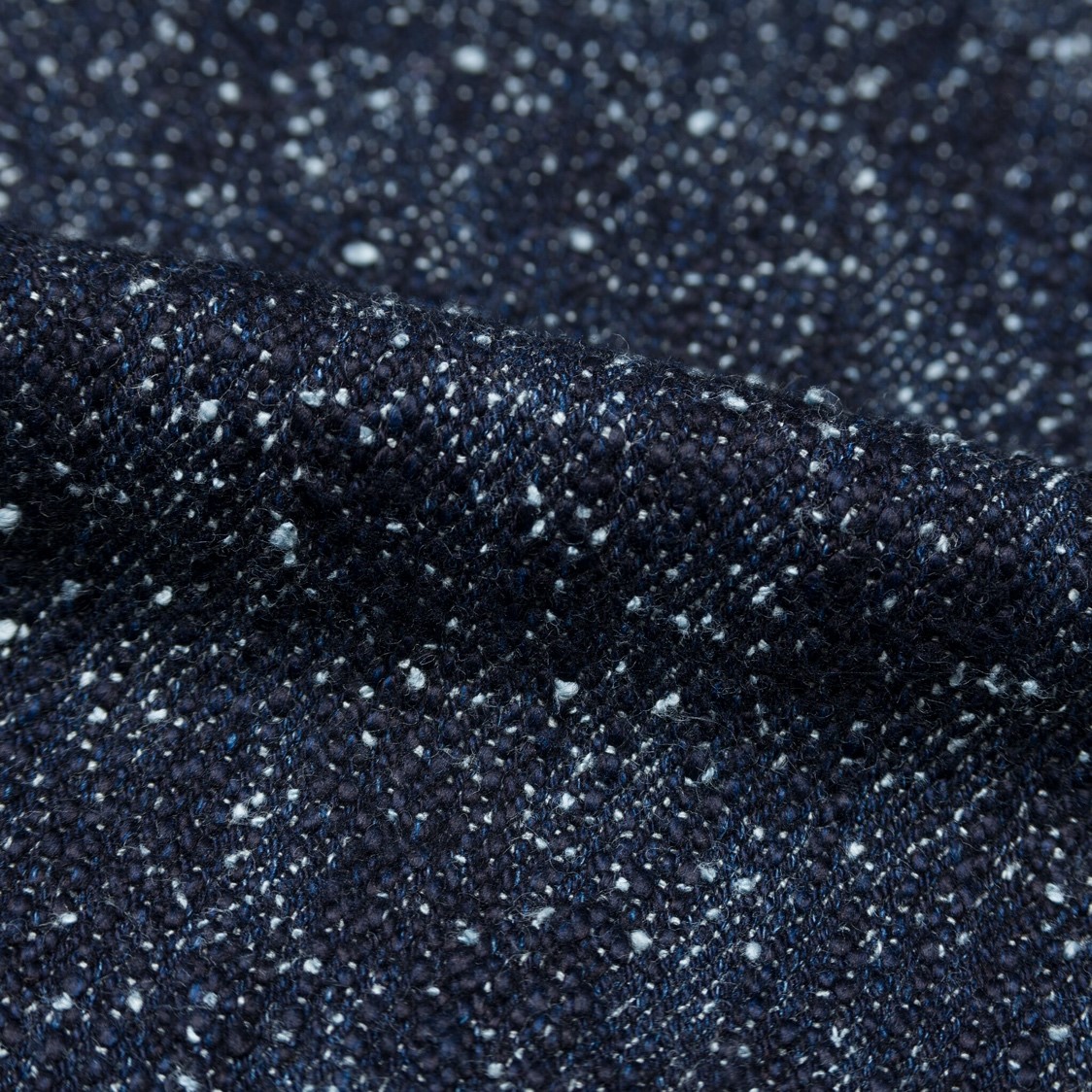
Çok şantuklu ve çok nepsli denimlerin genel zevke hitap ettiğini söylemek zor. Her ne kadar dokulu denimleri seviyor olsanız da bu dokunun göze daha az battığı ürünlere yönelebilirsiniz. Gözünüz ve eliniz, rehberiniz olsun. Eğer incelediğiniz denimler istediğiniz kadar dokulu değilse, aramanıza uygun terimleri ekleyerek sonuçları daraltabilirsiniz. Denimde aradığınız şey yağmur efektiyse, sonuçları daraltmak için aramanıza "şantuklu" kelimesini ekleyerek sonuçları daraltabilirsiniz. Eğer denimin üzerine kar yağmış gibi bir görüntü arıyorsanız, aramanıza "nepsli" kelimesini ekleyerek sonuçları daraltabilirsiniz. İyi alışverişler!
To view full content and a better mobile experience, try



